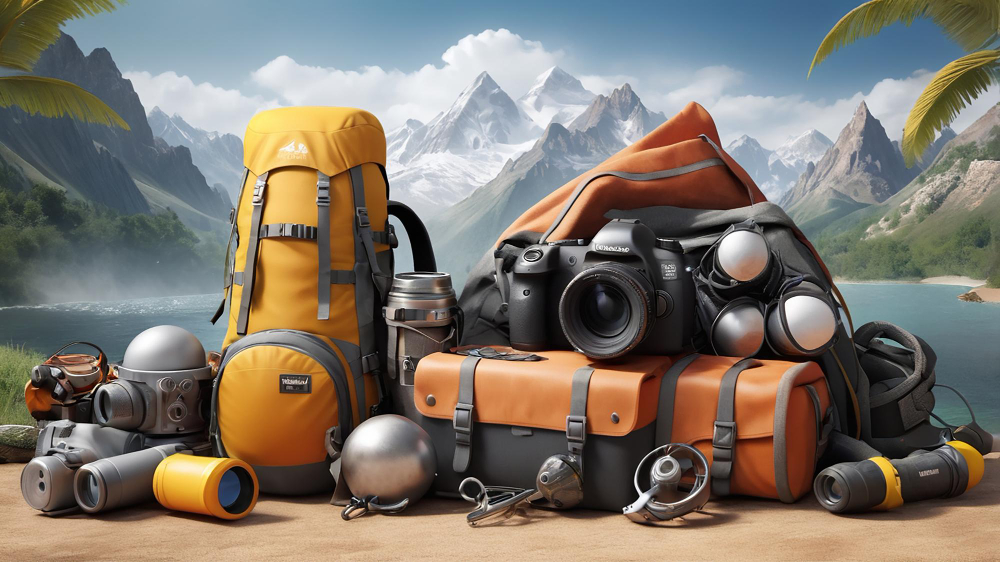
For thrill-seekers, an ordinary vacation often isn’t enough. Whether it’s skiing down a steep slope, diving into the deep blue sea, or hiking in remote, rugged terrain, adventure sports offer an exciting way to explore the world. However, these adrenaline-pumping activities come with an inherent level of risk. Injuries, accidents, and unforeseen events can turn an exhilarating trip into a stressful one if you’re not prepared. This is where specialized travel insurance for adventure sports comes into play.
Standard travel insurance policies often exclude high-risk activities, meaning that adventurers engaging in extreme sports need to ensure they have the right coverage. This comprehensive guide will help you understand what you need to look for when purchasing adventure sports travel insurance, so you can focus on enjoying the experience while knowing you’re fully protected.
What Is Adventure Sports Travel Insurance?
Adventure sports travel insurance is a specialized policy designed to cover the unique risks associated with high-risk activities such as skiing, snowboarding, scuba diving, rock climbing, and hiking in remote areas. While standard travel insurance may cover basic trip cancellations or lost baggage, it typically excludes claims related to injuries or accidents that occur during high-risk activities. Therefore, if you plan to participate in any extreme sports, you’ll need to purchase a policy that explicitly covers them.
This type of insurance not only includes medical expenses for injuries sustained during these activities but may also cover medical evacuation from remote areas, equipment loss or damage, and trip cancellation due to dangerous weather conditions.
Why Standard Travel Insurance Isn’t Enough
One of the most common mistakes adventure travelers make is assuming that their standard travel insurance will cover them while participating in extreme sports. Most standard policies have clauses that specifically exclude coverage for activities considered high-risk. This can include anything from scuba diving below a certain depth, skiing off-piste (outside marked ski runs), or rock climbing without a certified guide.
If you’re injured while participating in an adventure sport, and your standard travel insurance doesn’t cover that activity, you’ll be responsible for paying medical bills out of pocket. These costs can quickly add up, especially if you’re in a foreign country where healthcare is expensive or if you need to be medically evacuated from a remote area. Therefore, it’s essential to purchase a specialized policy that covers the activities you plan to participate in.
Key Components of Adventure Sports Travel Insurance
When selecting a travel insurance policy for adventure sports, there are several key components to look for. Understanding these will ensure you’re adequately protected while engaging in high-risk activities.
1. Medical Coverage for Injuries
This is the most critical component of any travel insurance policy, especially for adventure sports. Ensure that the policy covers injuries sustained during your chosen activities, whether it’s a skiing accident, a hiking injury, or a diving-related emergency. Medical coverage should include:
- Hospital stays: In case of severe injuries that require inpatient care.
- Surgery and emergency treatments: If an injury requires immediate medical attention, like a broken bone or a head injury.
- Physical therapy: Many adventure sports injuries require rehabilitation, which should be covered by your policy.
- Prescription medications: Coverage for any medication needed as a result of the injury.
Always check the maximum limits for medical coverage, as injuries from adventure sports can sometimes require extensive treatment. In countries with expensive healthcare systems, like the United States, it’s wise to opt for higher coverage limits.
2. Medical Evacuation
One of the unique risks of adventure sports is that they often take place in remote locations where medical facilities are limited or nonexistent. If you’re hiking in the mountains or diving in a secluded area, you may need to be airlifted to a hospital in case of an emergency. Medical evacuation is extremely costly, but with the right insurance policy, these costs will be covered.
Look for policies that specifically cover air ambulances, helicopter rescues, or other forms of evacuation from remote areas. Additionally, ensure that the policy includes coverage for repatriation, which means returning you to your home country if local medical facilities aren’t equipped to handle your injury.
3. Activity-Specific Coverage
Adventure sports encompass a wide range of activities, and not all insurance policies cover every sport. It’s crucial to choose a policy that explicitly lists the activities you plan to participate in. Some common examples of adventure sports include:
- Skiing and snowboarding: Make sure your policy covers accidents on the slopes, both on-piste and off-piste (if you’re skiing outside marked trails).
- Scuba diving: Check the depth limits of your policy. Some policies only cover diving up to 30 meters, while others allow deeper dives.
- Rock climbing: Ensure coverage whether you’re climbing indoors, outdoors, or engaging in technical climbing that requires ropes and other equipment.
- Hiking and trekking: Policies may limit coverage based on altitude. If you’re trekking in high-altitude regions like the Himalayas, make sure your policy covers trekking above a certain height.
It’s important to disclose all activities you plan to do when purchasing the insurance. Failing to declare your intended sports could invalidate your claim in case of an accident.
4. Equipment Coverage
Adventure sports often require expensive gear, whether it’s skis, diving equipment, or rock-climbing gear. If your gear is lost, stolen, or damaged, this coverage will reimburse you for the cost of replacing it.
However, check the fine print of the policy. Some policies have low limits for equipment, which may not be sufficient to replace high-end gear. You might need to purchase additional coverage for particularly expensive items. Also, note whether your policy covers equipment rented during the trip, as many adventurers rent gear instead of bringing their own.
5. Weather-Related Trip Cancellations
Extreme sports are often dependent on weather conditions. A skiing trip can be cut short due to a snowstorm, or a diving excursion canceled due to rough seas. A good adventure sports insurance policy will include coverage for weather-related trip cancellations. This ensures that if the weather makes it impossible to proceed with your planned activities, you can recover the costs of prepaid bookings.
6. Personal Liability Coverage
Adventure sports come with a certain level of risk, and there’s always a chance that an accident could involve another person or property. Personal liability coverage ensures that if you accidentally injure someone else or damage property during your activities, the insurance will cover legal costs or compensation claims.
For instance, if you’re skiing and accidentally collide with another skier, causing injury, personal liability coverage can protect you from being sued for medical expenses or damages.
7. Coverage for Search and Rescue
In extreme sports like mountaineering or backcountry skiing, there’s always the possibility of getting lost or needing to be rescued. Some travel insurance policies offer search and rescue coverage, which pays for the costs of locating and rescuing you if you’re lost, stranded, or in danger. This type of rescue can involve substantial costs, especially in remote regions, and is not something you want to be paying out of pocket.
What to Look for When Buying Adventure Sports Insurance
When purchasing a travel insurance policy for adventure sports, there are several things to keep in mind to ensure you’re getting the right coverage.
Check the Policy’s Exclusions
Every insurance policy comes with exclusions, and adventure sports insurance is no different. Carefully read the list of excluded activities and situations. For instance, some policies might exclude coverage if you’re participating in a sport without proper safety equipment, such as skiing without a helmet or diving without certified supervision.
Look for Policies Tailored to Specific Sports
Many insurance companies offer policies that are tailored specifically to certain sports, such as skiing, diving, or mountaineering. These policies often provide more comprehensive coverage for the specific risks associated with those activities.
Consider the Length and Scope of Your Trip
Adventure sports can vary from a short day hike to a multi-week expedition. Ensure that your policy covers the entire duration of your trip and that it’s suitable for the locations you’ll be visiting. If you’re traveling to multiple countries, make sure the policy covers all of your destinations.
Conclusion
Travel insurance for adventure sports is an essential investment for anyone engaging in high-risk activities abroad. While standard travel insurance may cover the basics, it typically falls short when it comes to the specific risks associated with extreme sports. By selecting a specialized policy that includes medical coverage, equipment protection, and evacuation services, you can focus on the thrill of the adventure without worrying about what might go wrong.




